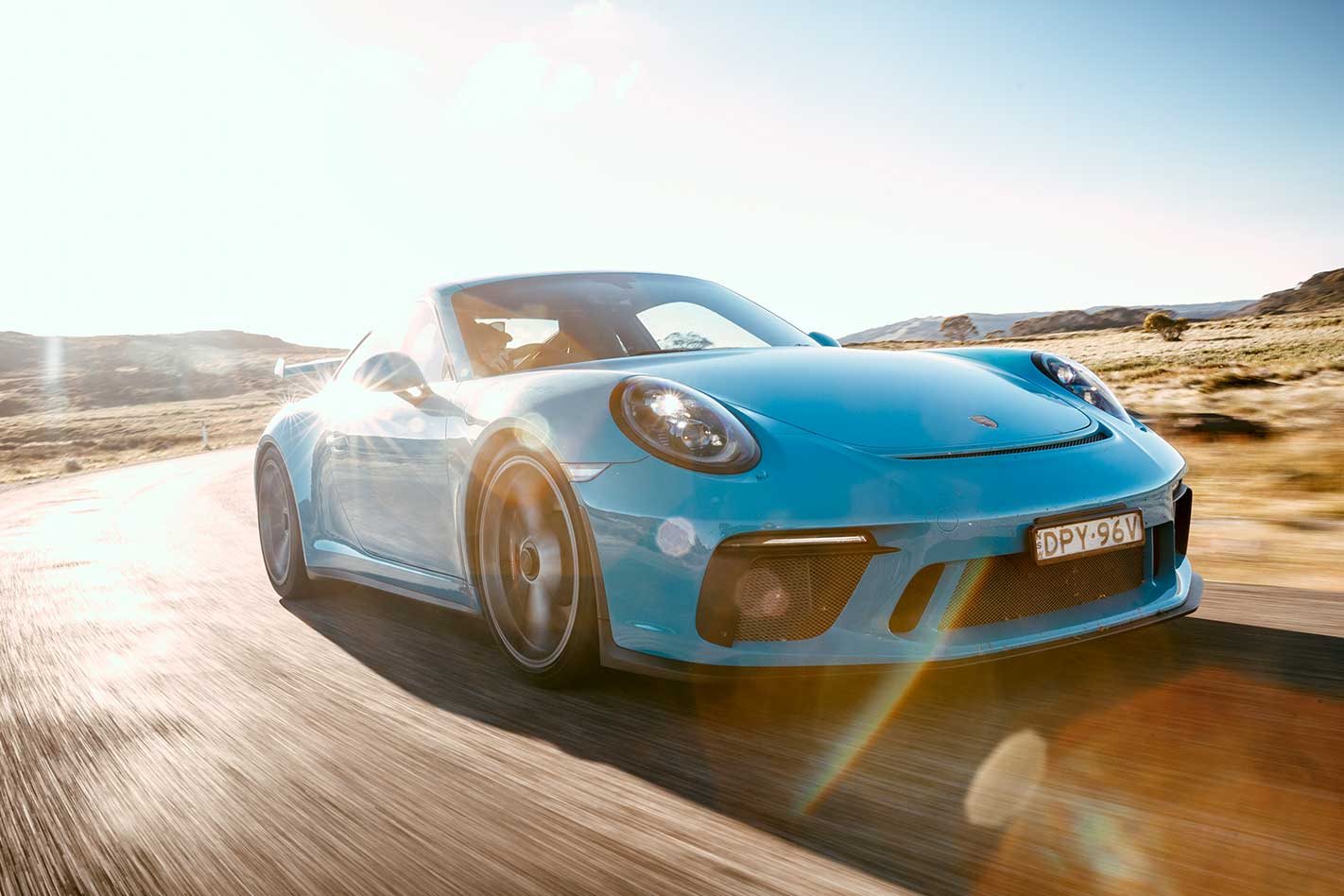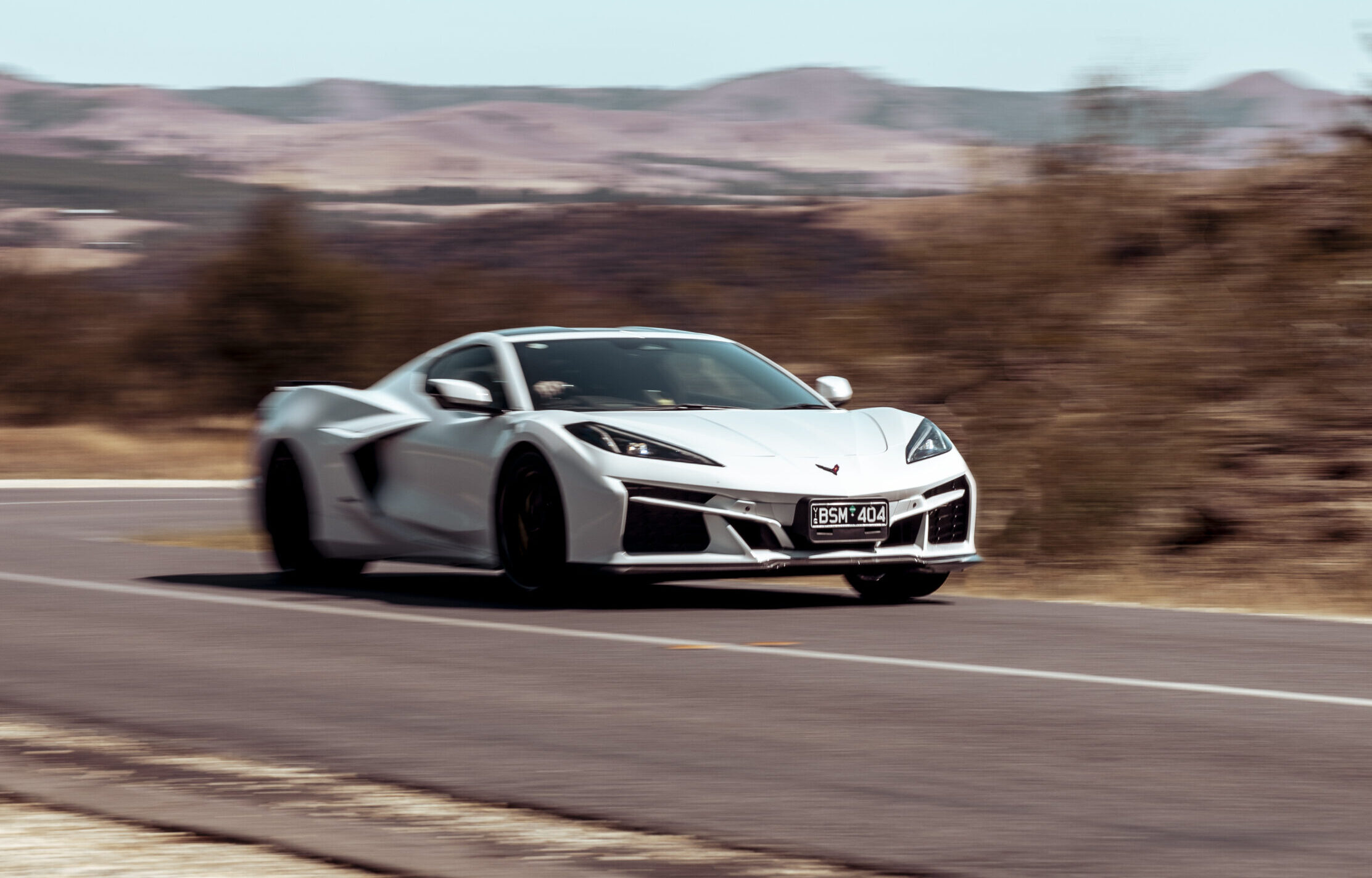Sitting pretty by the side of the road, the Miami Blue Porsche 911 GT3 quietly ticks as its metal components cool.
A persistent wind sweeps across a barren, almost treeless landscape, which looks more like somewhere north of England than the sunburnt country. There’s not a human structure for miles and we haven’t seen another car in what feels like hours. Falls Creek in the Victorian High Country, at sunset, in summer, is an isolated, empty place.
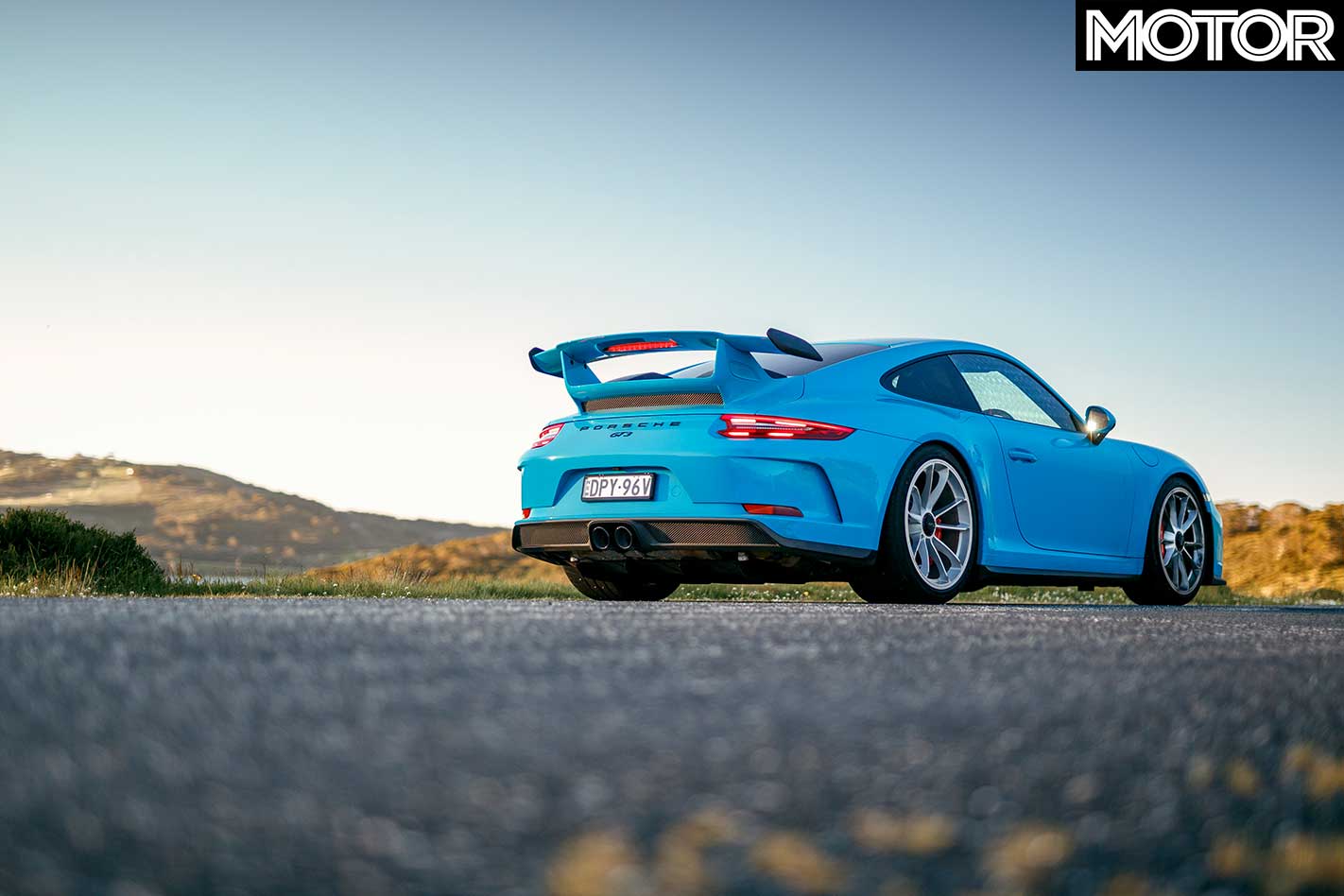
I’d just experienced the explosive new 4.0-litre engine in the 991.2 911 GT3 in all its 9000rpm fury, but also the punishing lateral grip from the super-soft Dunlops, the PDK so responsive it’s like it’s spliced directly into your brain, the flat-six howl loud like a Carrera Cup car.
This part of Australia is nirvana for driving roads. Hundreds of kilometres of undulating, twisting bitumen stretch across a unique Australian alpine landscape, as if thrown over the mountains in giant strings, forming into roads as they fell. You’ll lose 30 minutes of your life the first time you find this area on Google Maps.
If you could take one car, you surely wouldn’t shirk at the updated 991.2 GT3 – a car that does strange things to the soul. Built for drivers, the GT3 continues to evolve. And improve.
For 991.2, the big changes are engine, downforce and the glorious reinstatement of a manual transmission option.
Under the new engine boot-lid ram air scoops sits an even more muscular naturally aspirated flat-six, stroked from 3.8 to 4.0 litres, with a ridiculous 13.3:1 compression ratio (the highest of any car on sale today), a beefed-up, new dry sump oil system with seven scavenge pumps, not unlike the one you’ll find in the 919 Hybrid LMP1 car.
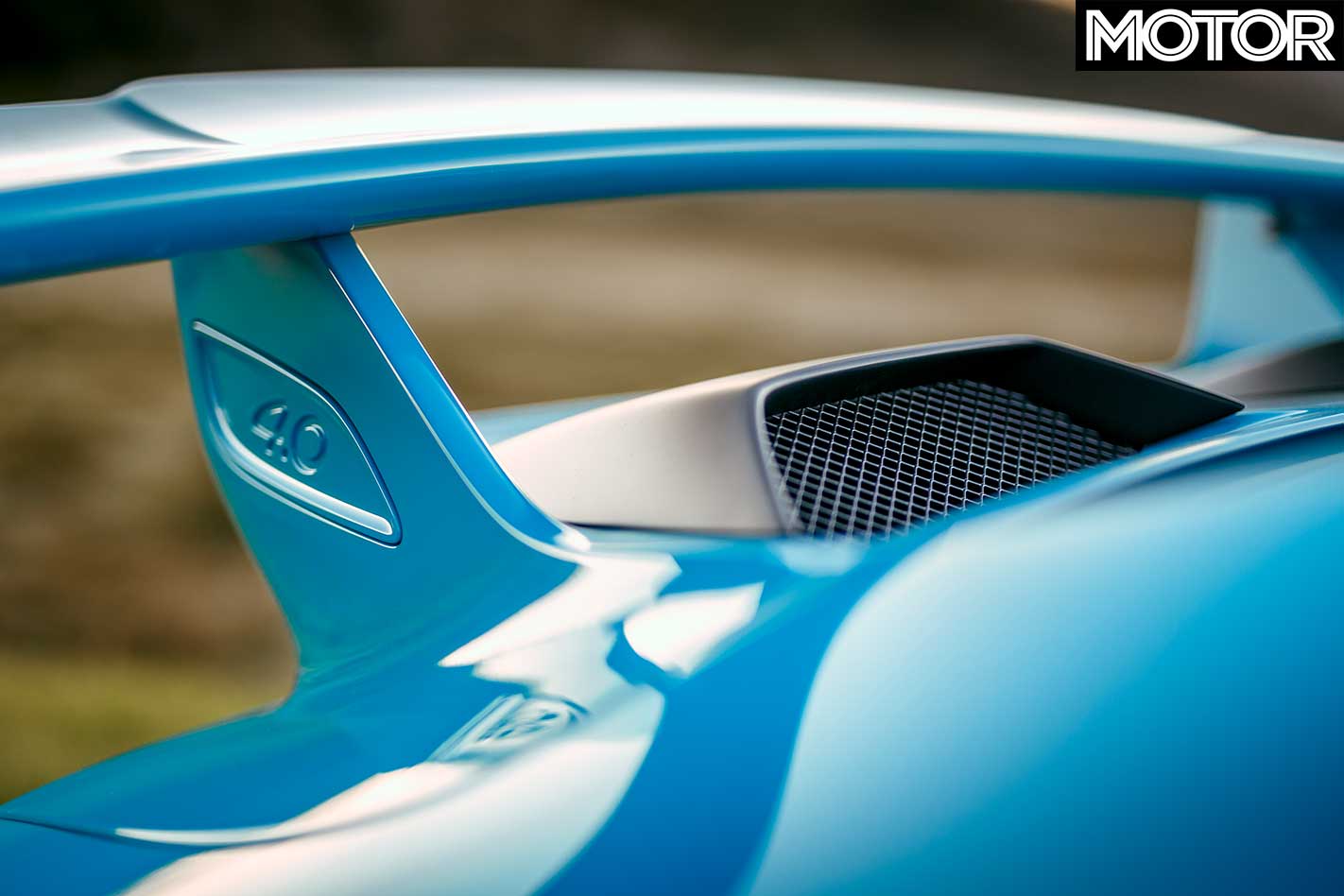
There’s a new crankshaft, no more hydraulic valvetrain and a new two-stage ‘flapper’ variable intake system for better air delivery no matter the rpm.
The embarrassing engine failures and fires of the first 991 GT3s have led Porsche to build this engine, something that’s bulletproof. While its 368kW and 460Nm are identical in output to the previous 991 GT3 RS (increases of 18kW/20Nm on the outgoing ‘base’ 3.8-litre GT3) Porsche says this new 4.0-litre unit is a very different animal.
Porsche didn’t just stop at the engine, naturally. There are new calibrations for PDK and the all-wheel steering, restyled front and rear bumpers (which are an improvement to these eyes), subtle suspension tweaks and a revised Michelin Pilot Sport Cup 2 tyre (although our test car is fitted with Dunlop Sport Maxx Race 2s).
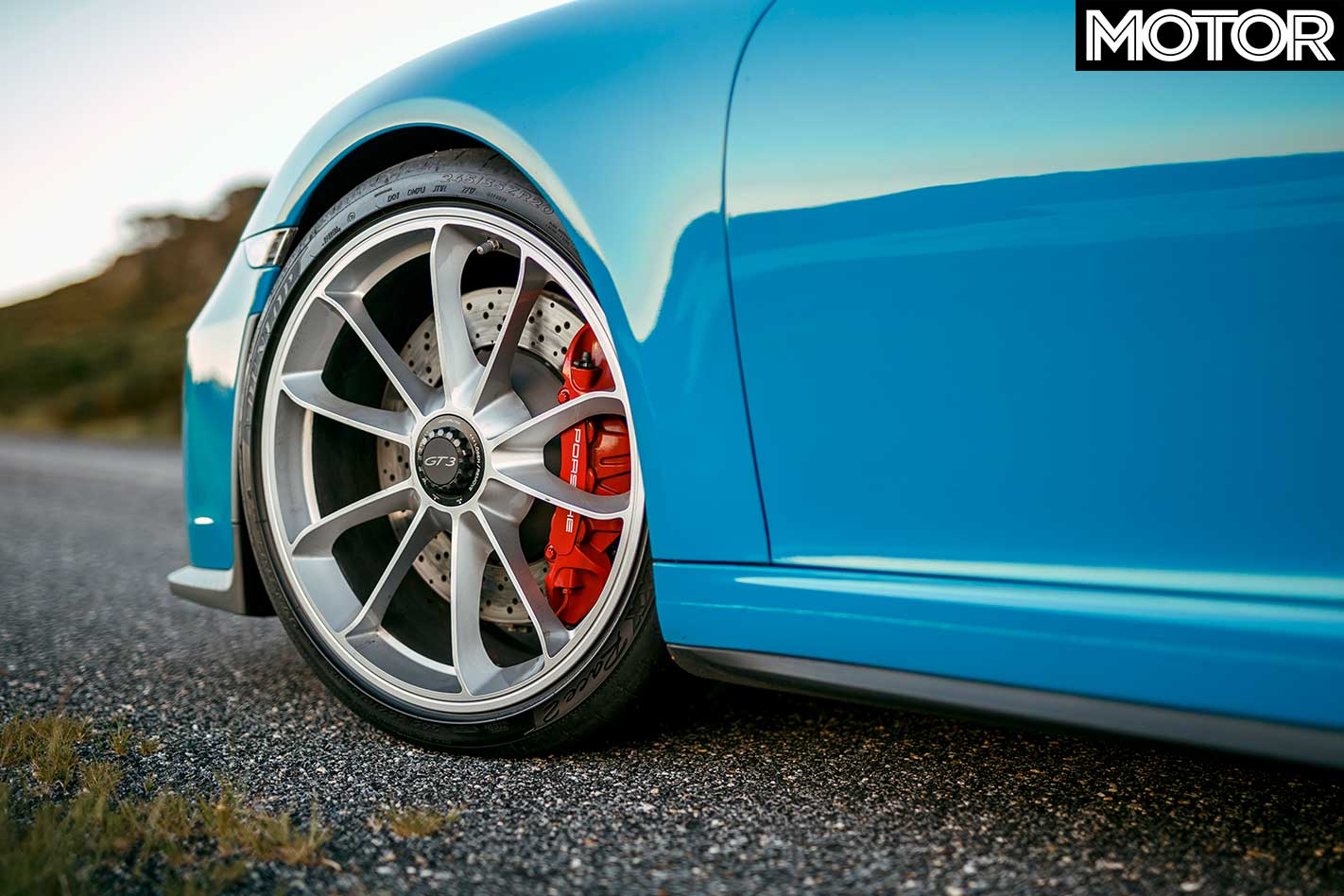
On the downforce front, the rear wing is mounted 20mm higher and further back to give the 991.2 GT3 around 20 per cent more than its predecessor – or about the same downforce as a 997.2 RS.
All this combines for a huge reduction in Nurburgring lap times. Where the outgoing 991 GT3 did a blistering 7:25 – four seconds quicker than a Carrera GT – the new 991.2 GT3, thanks to its extra grunt and downforce, is capable of a 7:12 lap, claims Porsche. Or a difficult-to-believe eight seconds quicker than the 991 GT3 RS.
Although the old RS will still shade the new GT3 in a straight line, no doubt helped by its widebody Turbo rear guards housing 918-spec 325mm rear tyres – compared to the 991.2 GT3’s Carrera body and 305s, carried over in width from the 991 car. We’re talking 3.3sec versus 3.4sec to 100km/h, 7.1sec versus 7.3sec to 160km/h, 10.9sec versus 11.0 to 200km/h.
But basically, the new GT3 is an RS-fast car without the audacious rear wing, vents and decals. In PDK form it weighs the same as the outgoing 991 GT3, 1430kg.
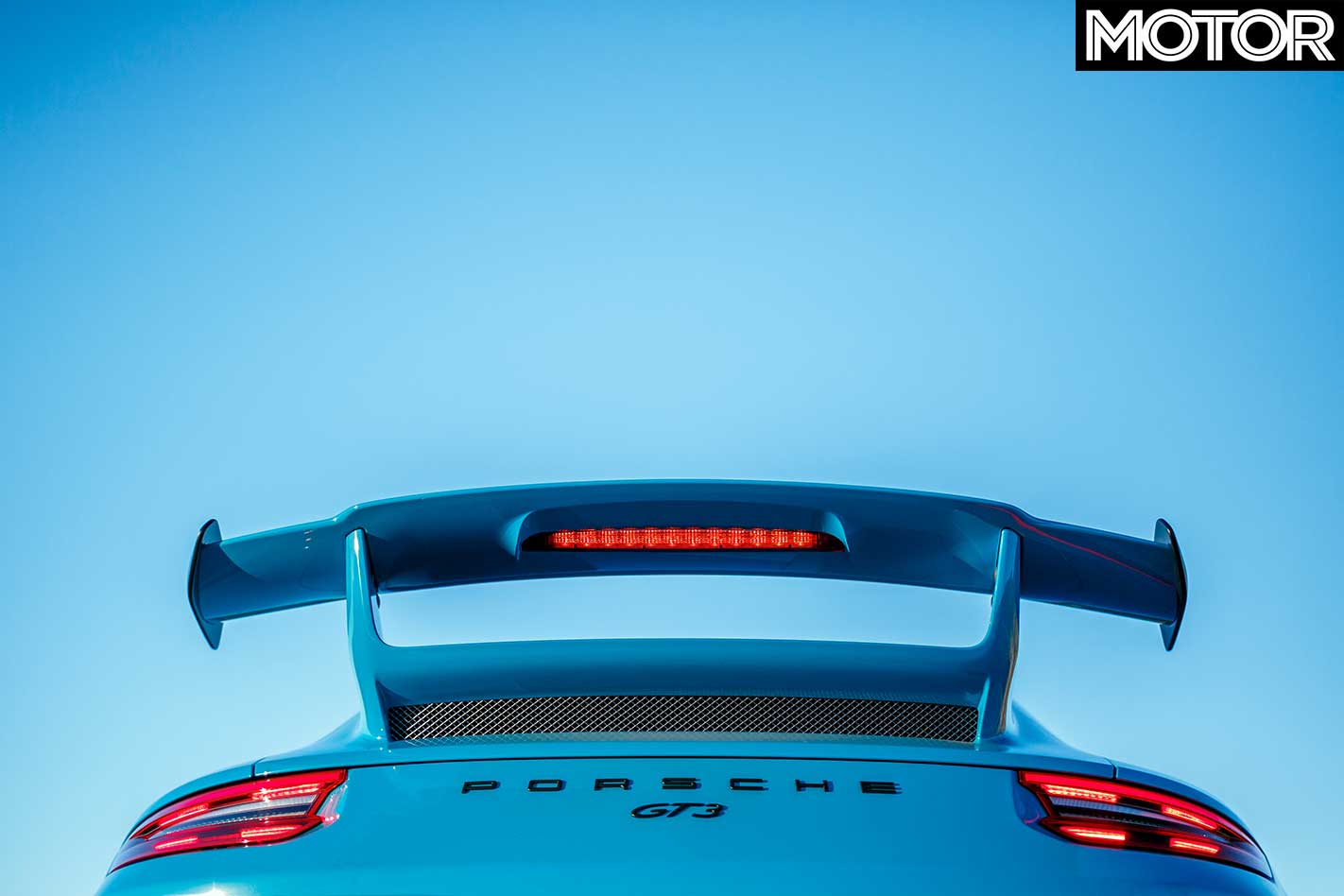
The return of a six-speed manual gearbox, the same Getrag unit first deployed in the 911 R, is huge news for purists, for obvious reasons. And tacit acknowledgement from Stuttgart that they misread the market by ditching it in the first place. It’s also 17kg lighter than the PDK, which is the transmission fitted to our test car today.
We have an Aussie test of the manual 991.2 GT3 in the pipeline but for now, there’s no denying the lightning-fast PDK will still be the pick for many GT3 owners.
Having rearranged the racing harness so as to not get a hockey-puck-sized buckle in your nether regions, as you fall into the GT3’s deep bucket seats you notice that its interior is a place of business.

Although you sit low – with a very vertical steering wheel ahead of you inviting your hands to nestle into the Alcantara at nine-and-three – forward visibility is excellent. In the side mirrors you look over achingly gorgeous rear hips, catching sight of the rear wing’s endplates.
Glance behind the seats and there’s the gorgeous satin black half cage off which red racing belts reach into the carbon-backed fixed buckets. Your passenger will find it humorous that they have two sets of seat belts and a fire extinguisher at their ankles.
But if there’s one thing that’s certain, it’s that sitting in a 911 GT3, with its almost perfect driving position, feels oh-so-right.
In front of you, very excitingly, a large central tachometer reads 9000rpm and hints at what you’re in for. As you insert the chunky key fob into its cradle and turn it, the GT3 clatters to life, settling to a busy, gravelly idle.

Around town and at low engine speeds, the GT3 is behaved – the PDK smooth, the ride satisfactory. The tyres roar at highway speeds on coarse chip bitumen but you could daily-drive the GT3, if you were willing to ‘put up with it’ a little bit.
Long distance touring is even possible, but at the end of, say, 500km, you’ll know you’ve just done it in a GT3. As we discovered driving it up the Hume Highway from Melbourne, to Winton Motor Raceway.
If we had just thrown you the key, we would expect nothing less than for you to drive straight to the nearest track day. Which is basically what we have just done.
Parking between Toyota 86 Racing Series cars and other punters in their BMW M3s et al, the GT3 is not the slightest bit subtle. “You can go out in both sessions,” grins Charlie, Winton’s track day babysitter.
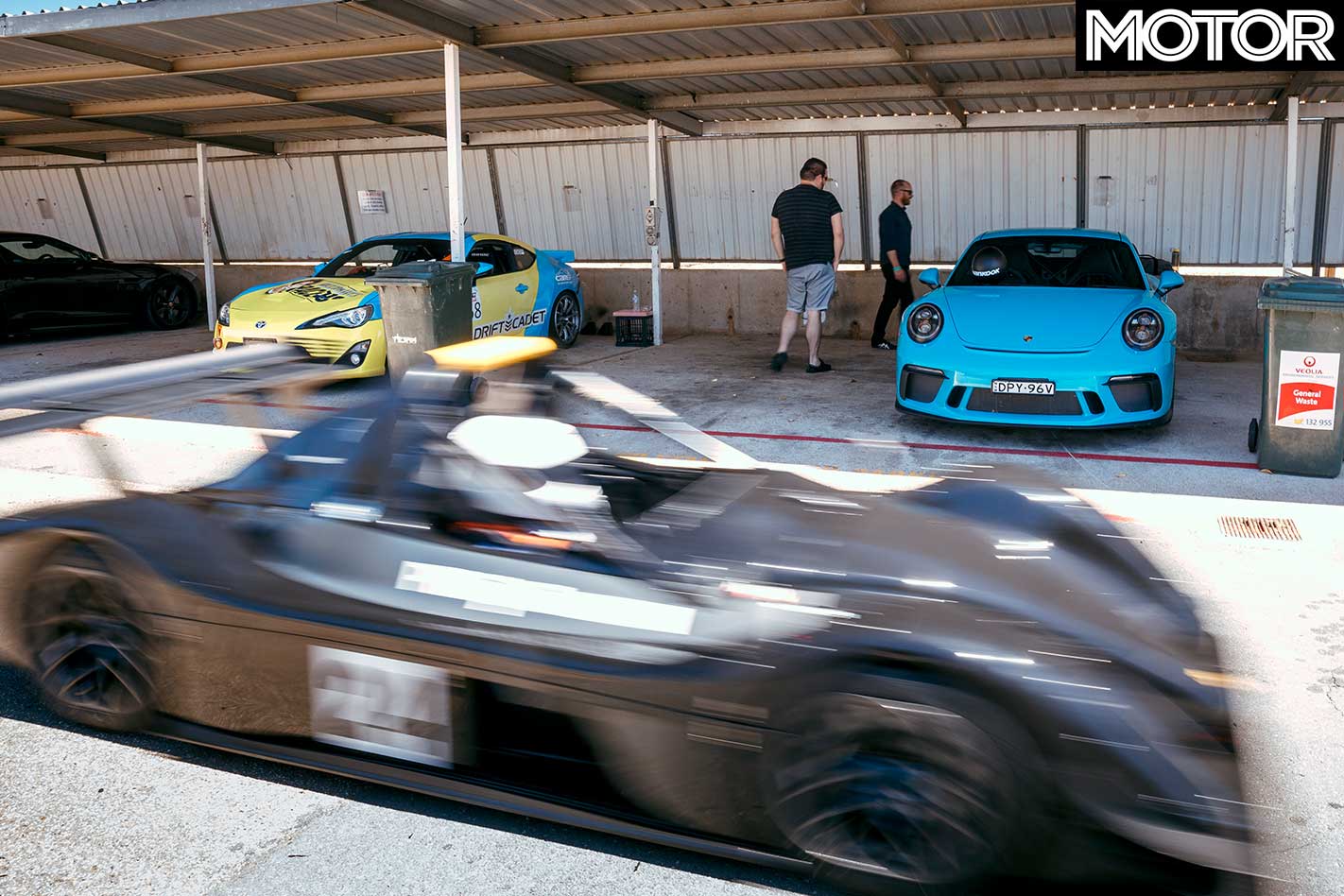
“You’ve got a cage and harness, so you can do both race cars and road car groups”. You beauty.
Donning my matte-black open-face Bell helmet which never fails to entertain my colleagues, and strapping myself in with the red harnesses, it’s time to head out on to the track.
It feels like I am in a carpeted race car, as rocks audibly tickle the car’s underside and like there is nothing whatsoever obstructing the noise coming from the tailpipes. With PDK knocked into manual mode, in Sport Plus, and the dampers soft, it’s time to build up to maximum attack.

The first thing you notice leaving pitlane is… this car has explosive response and acceleration that would make the previous 991 GT3 feel a little torque-less from the lower revs, and one that matches the 991 GT3 RS but with a roaring 9000rpm redline. (The 991 RS had a reduced 8800rpm redline.)
In first and second gears, you have to feed the throttle in a bit more carefully than you did the previous GT3 – there is a new eagerness to turn the cold rear tyres in the lower gears. And winding the fluoro orange tacho needle clockwise right to the ‘9’ feels like someone removed the rev limiter with a laptop, about 2000rpm higher than what feels safe. The noise at 8000-9000rpm is highly strung, technical, raw, sonorous. It is just so exciting.
On the first lap, the gumball-soft treadwear 80 Dunlops still cold, the GT3’s front end does not accept your ambitious steering inputs, the ABS has arrived early to the party and the rear end squirms as you try to put the power down. But as the tyres heat up, the car completely changes. And we are catching up and passing fully-caged race cars with no numberplates around the circuit. In a road car.

The challenge is getting the best out of the brakes – and the rear tyres, which are so much wider than the fronts. With tyre temp, you can brake so late – to the point it gets physical, your body straining into the belts and you having to hold your neck up as you try to find the ABS, but instead just find more g-force and dive. This makes getting the best out of the car an expert-level thing, as you have to brake late and right up to the apex, keeping the weight over the nose to combat understeer and get the GT3 pointing towards the exit.
Trail-braking, you can barrel into tight corners with more and more speed with each lap, expecting the rear to let go as you ask too much of it, but it just sticks and rotates – no doubt helped by the all-wheel steering, which works extremely subtly to enhance the GT3’s feeling of agility.
Once pointing towards the exit, you can pick up the throttle far more aggressively than feels possible – having an engine over the rear tyres does help in that department. And the 991.2 just leaps off apexes, more forgiving than the old 3.8 if you happen to find yourself lower in the revs.
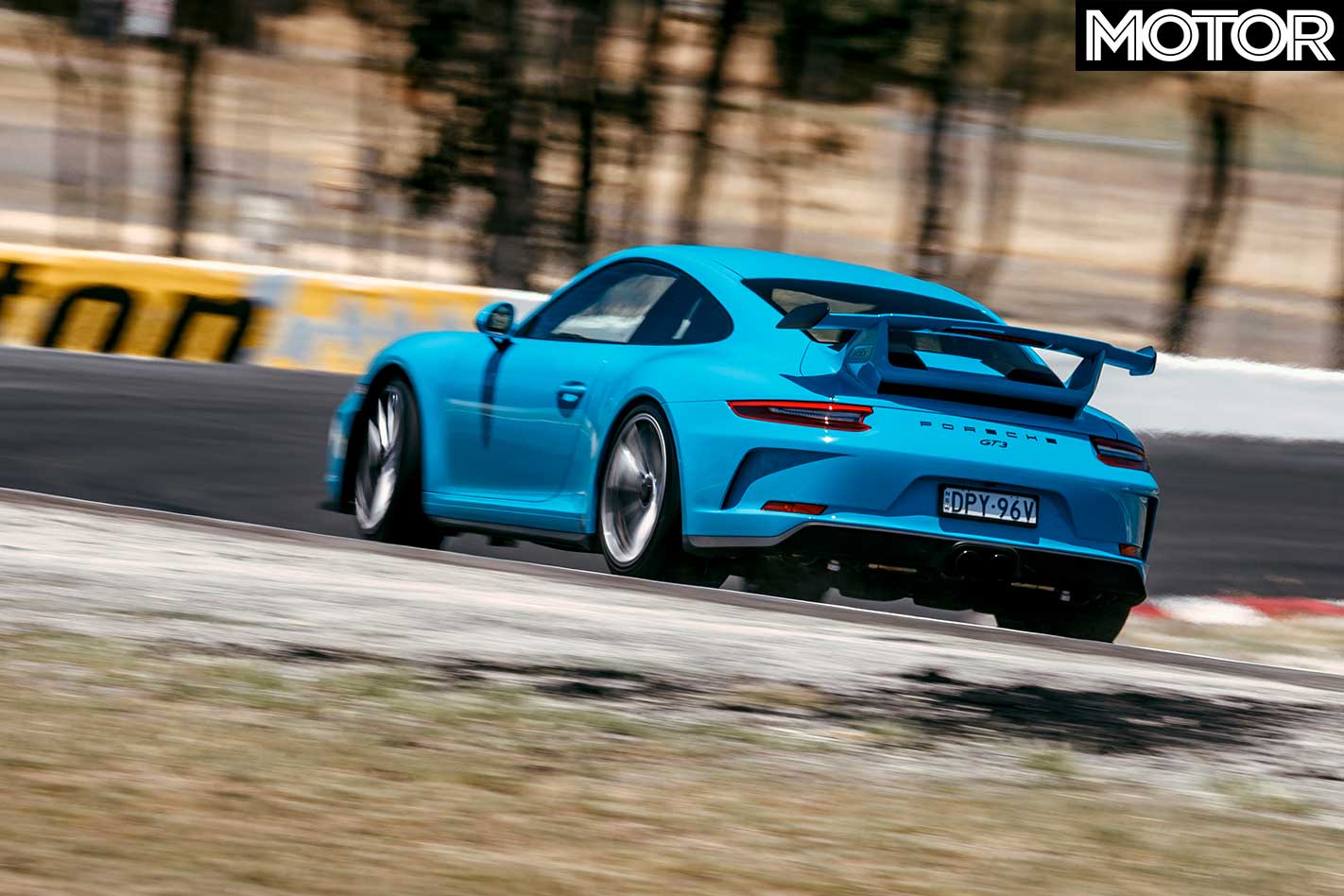
The lateral grip is absolutely stunning – and this is a car that feels better the harder you push it, and also exponentially more difficult to extract the best from as you try to move from nine-tenths to ten-tenths. It likes smoothness, but in fast-forward. Learn to master a GT3 on a racetrack and you will have made yourself into an incredibly skilled driver.
As the Dunlops start to give up – it was 35-degrees at Winton after all, and the pressures were probably too high – we button off and thoughts come flooding in.
The rear wheels and tyres feel bolted from the fixed-back seats off our hips. The front tyres’ contact patches feel at our finger tips. We can feel the power of the brakes in our chest and changing gears with the even-more-responsive PDK feels faster than thought itself.
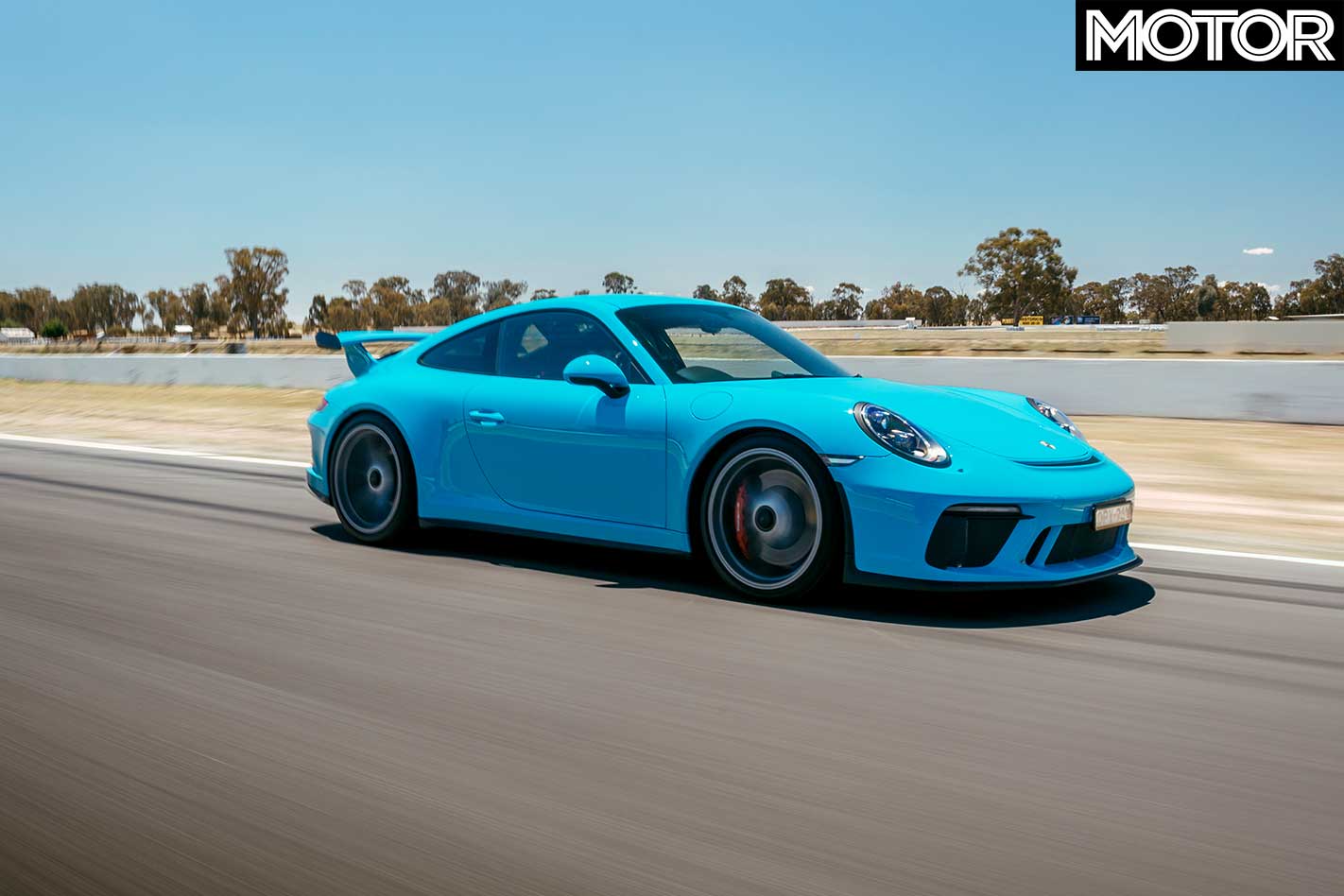
What a mega car – and one that feels to be able to take your punishment around a racetrack all day. You will fall to pieces before it does.
There is one thought we can’t shake, however, and it’s probably the only thing you could ever criticise a GT3 for: in the back of your mind, you are managing weight.
At 1430kg, the GT3 is not really a lightweight car, and neither are its RS siblings despite being adorned with all sorts of exotic, lightweight materials.
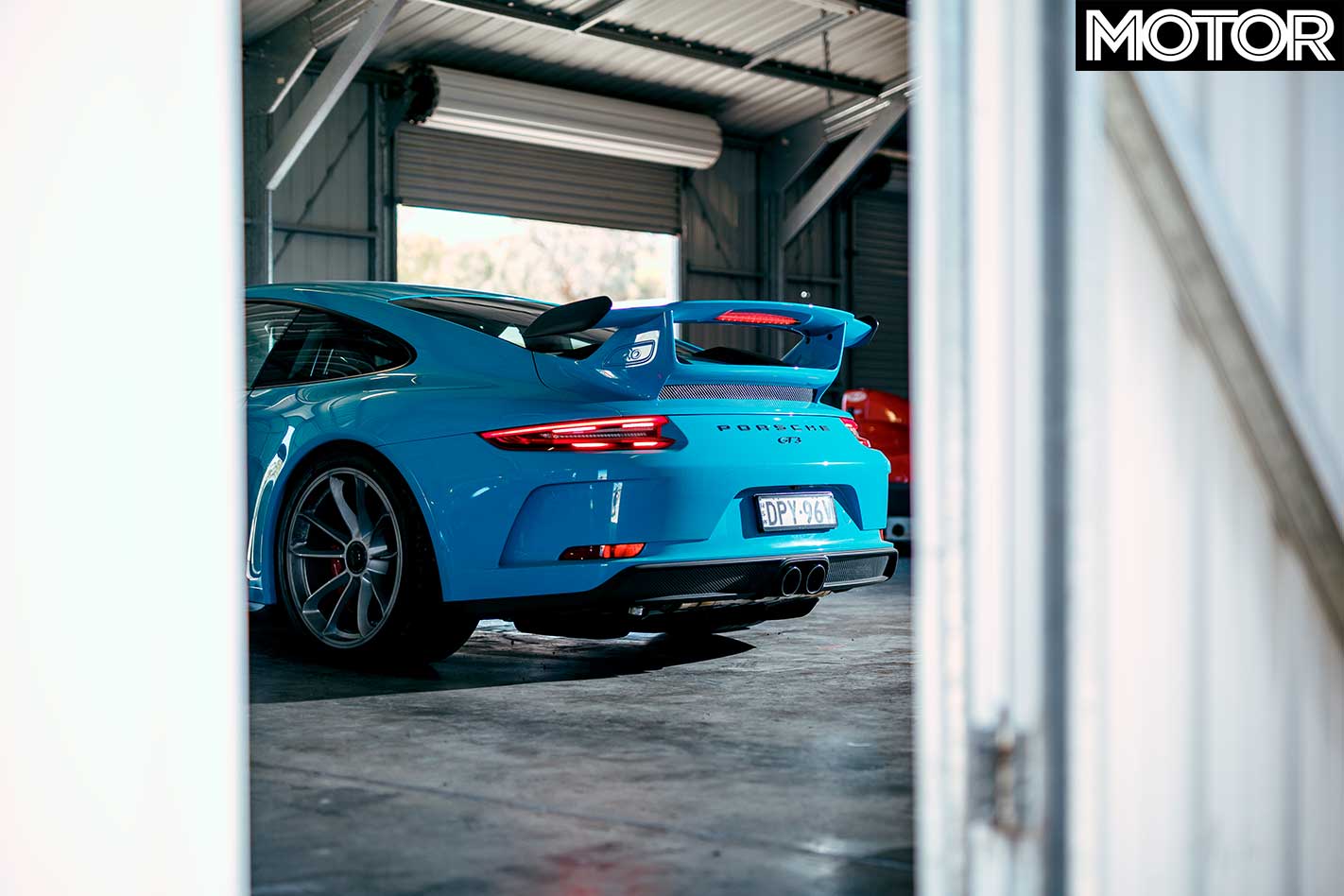
Carrying the brake into corners, it does feel ever so slightly like there are half a dozen bags of cement in the boot (no surprise) and when you’ve asked too much of the rear tyres into a corner on the brake, and they throw the towel in, be prepared to quickly chase it to get it back.
And those same cement bags make themselves known when the car is fully loaded on one side, and you need to quickly swap to the other through a fast chicane like Winton’s turn five left to turn six right.
With such a powerful, rev-happy, linear engine, crazy-fast PDK, incredible brakes and lateral grip, it does feel like only so much more can be thrown at the 991 GT3. The next big gain for the GT3 – and we hope this will be the case when the next-generation 992 is unveiled in the coming years – is a drastic diet. The 991.2 GT3 would go from beguiling to utterly god-like if it lost 100kg overnight – impossible, unfortunately.
Not that we’ve driven it yet, but we also have a sneaking suspicion the manual is the transmission to get.
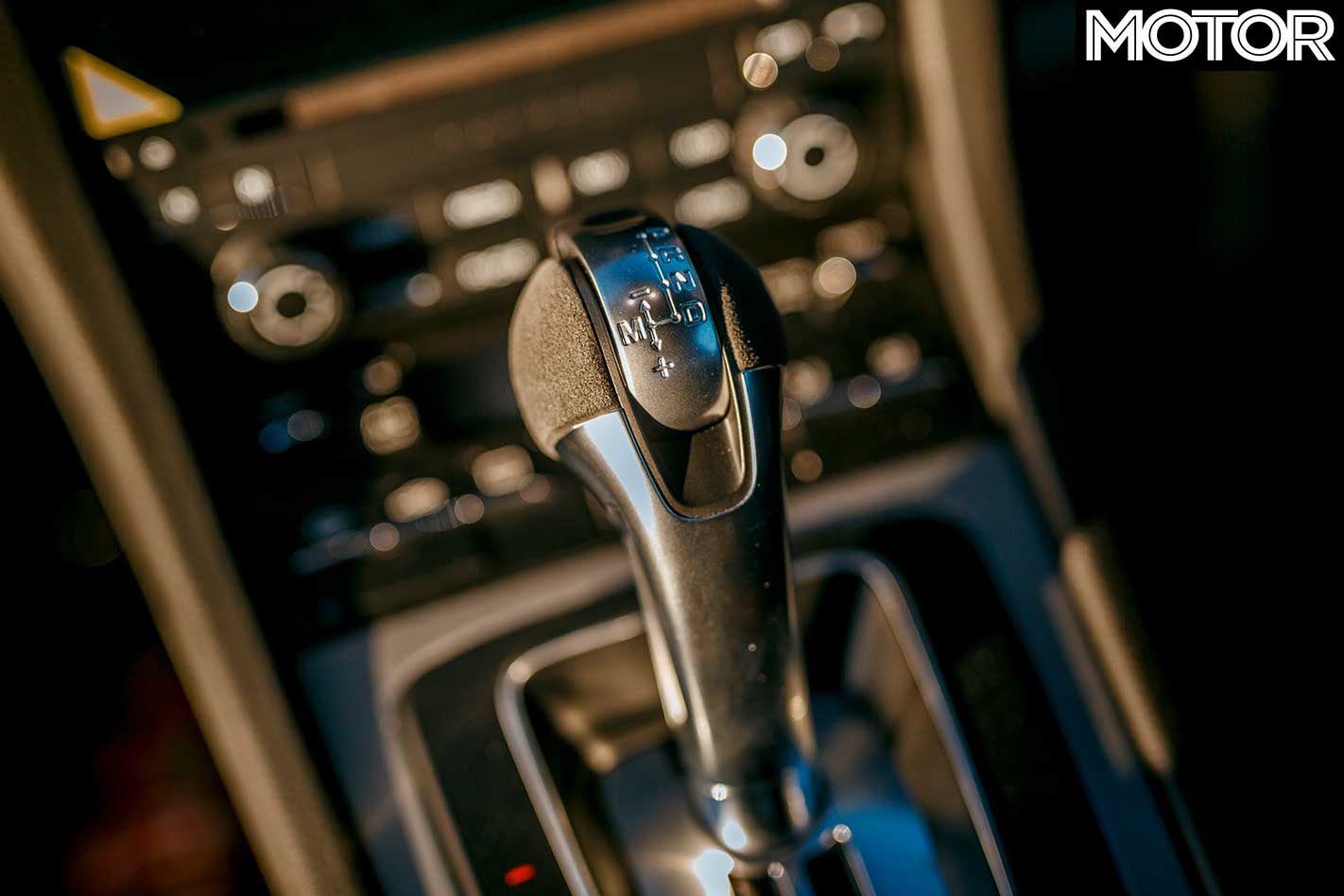
The PDK is ultra fast and in 991.2 GT3 guise, possibly the best performance automatic transmission ever. But while the GT3 is marketed as a track-day car and a tool in which you can chip away at your own lap time PBs, it’s become so much more than that.
With one of the last living atmo engines – which just so happens to also be one of the best free-breathing powerplants ever made – the GT3 has transcended its track-day image to become a truly lust-worthy, raw and pure driver’s car for the road.
Getting the manual is only going to deepen the connection with the car and improve the sense of involvement to make for a more emotional experience. Even if you’re hell-bent on chasing PBs at a racetrack, there’s nothing wrong with having a manual at all.
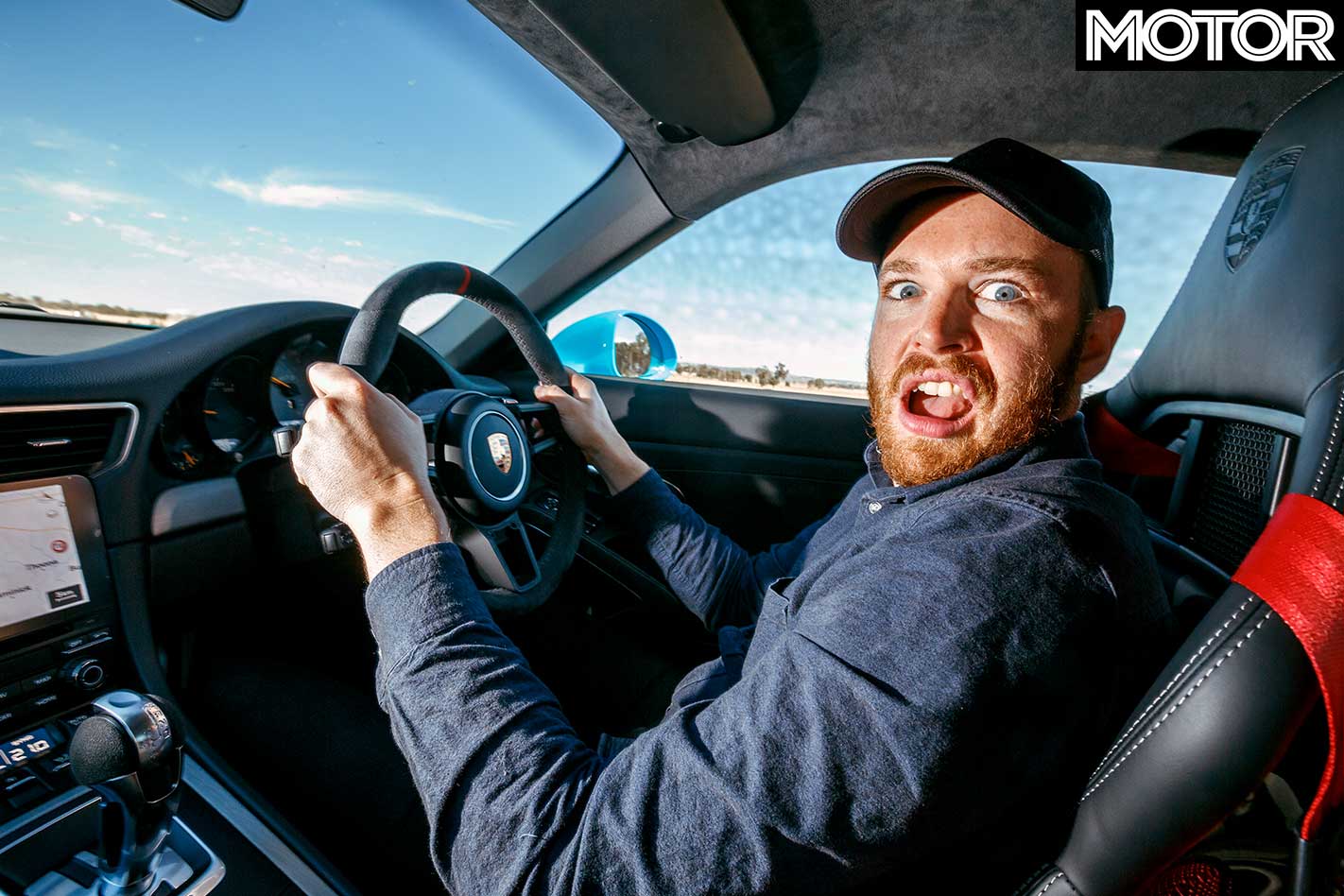
Yes, it’s slower than the PDK, but if you’re racing yourself, who cares? Recall that for decades, every race car on earth had an H-pattern and clutch pedal and its driver’s job was to shave tenths off their lap time.
Leaving the track, we set the satnav to Falls Creek, 165km east, straight into the heart of the Great Dividing Range. With the track the only place you can properly explore the GT3’s enormous reserves of grip, we relax into the drive as the rear tyres roar and the car jiggles along, the sun lowering towards the horizon in the rear vision mirrors, thinking the hard driving is done for the day. But we had forgotten that after Mount Beauty, the road turns properly twisty.
By the time we reach the top, somewhat sooner than expected, I feel like another cigarette. And I don’t even smoke.
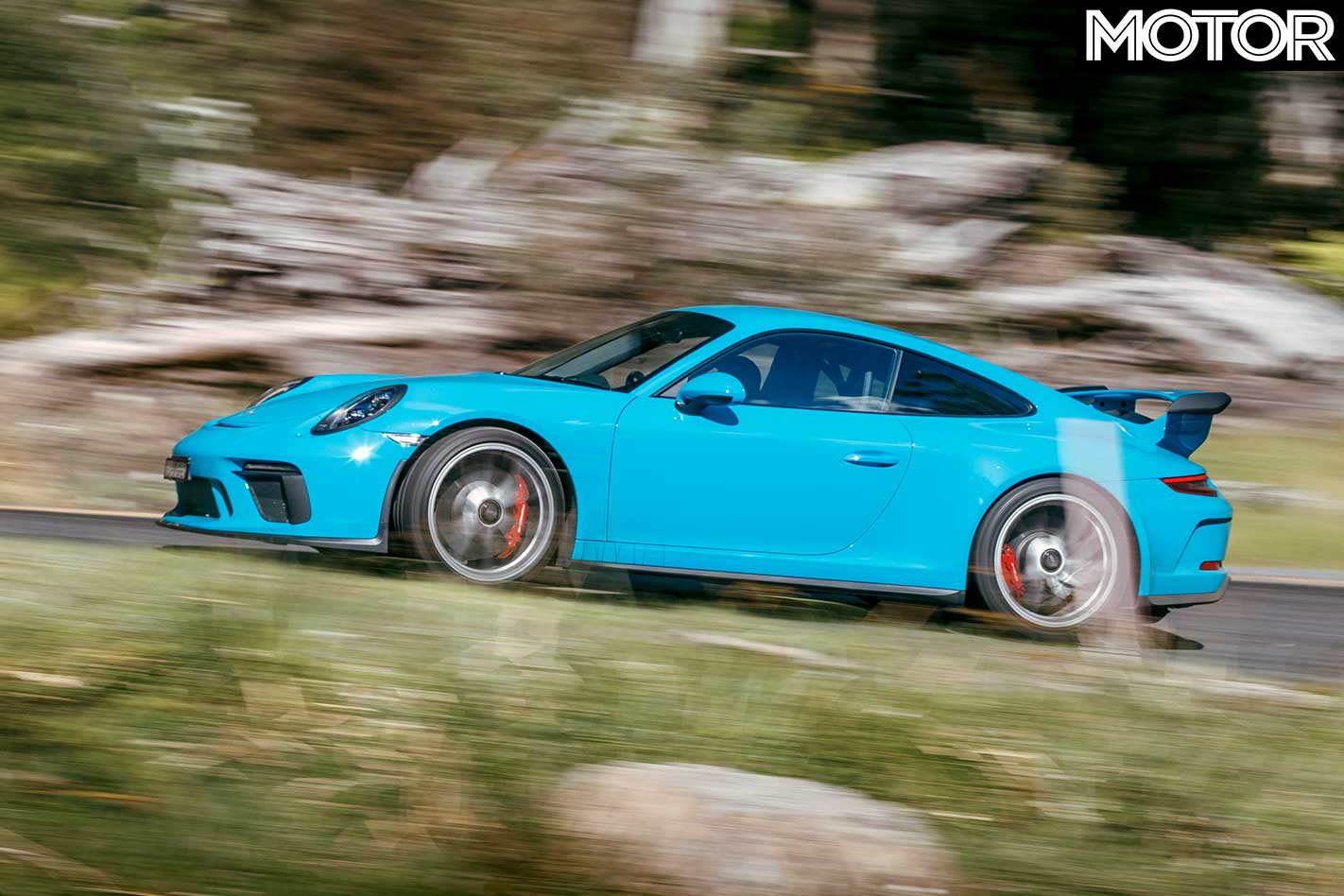
Porsche 991.2 911 GT3 Pros & Cons
5 Highs: 1 – Epic new engine, new muscularity 2 – The noise. Ermagerd, the noise 3 – PDK somehow even more responsive 4 – Will do laps of a track all day long 5 – You might have a spiritual epiphany
5 Lows: 1 – Dunlop Race 2s. Michelins are superior 2 – Porsche loves its taller gear ratios 3 – We wish it weighed 100kg less 4 – We can’t have one 5 – Erm. This is hard
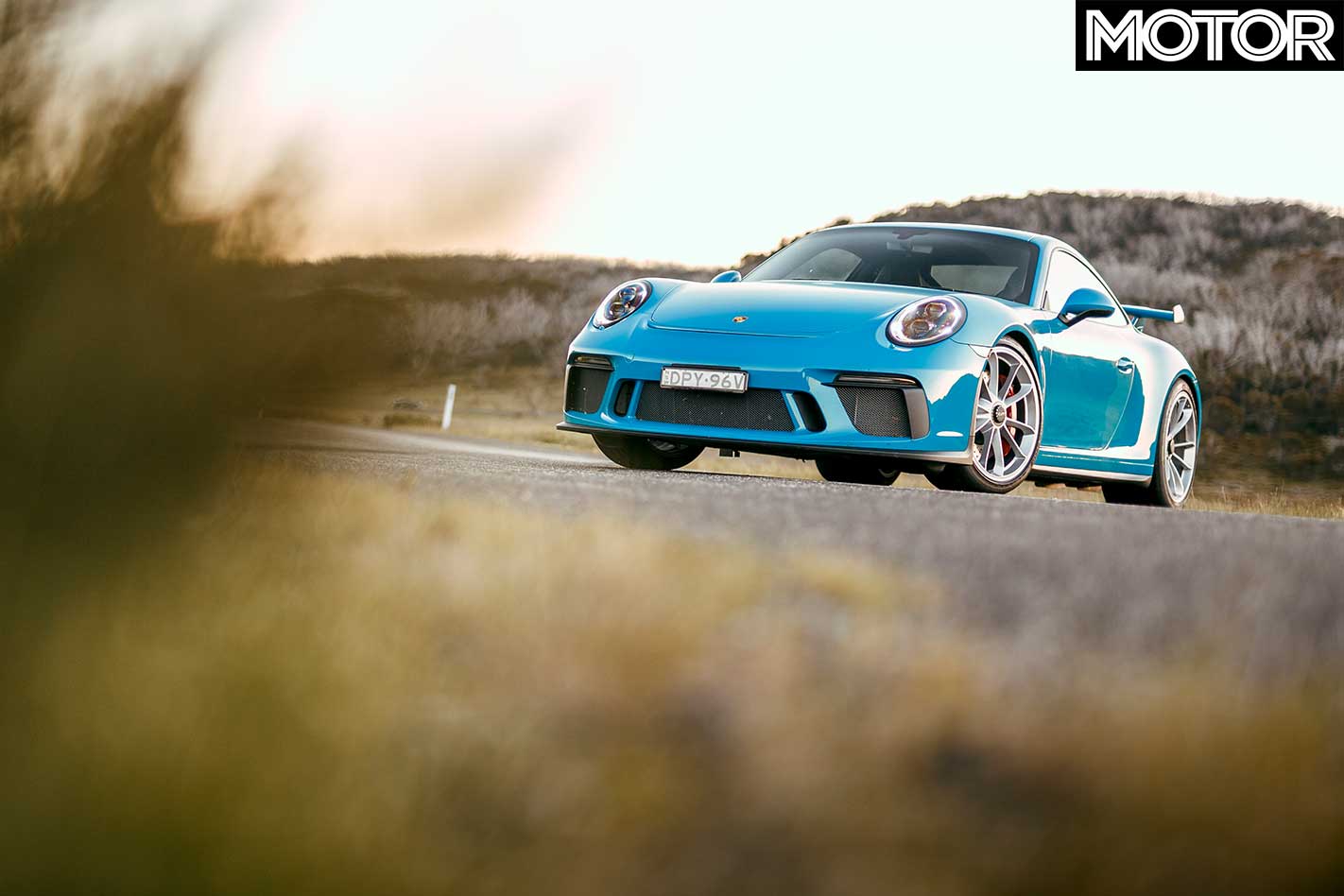
FAST FACTS Porsche 991.2 911 GT3
BODY: 2-door, 2-seat coupe DRIVE: rear-wheel ENGINE: 3996cc flat-6, DOHC, 24v COMPRESSION RATIO: 13.3:1 POWER: 368kW @ 8250rpm TORQUE: 460Nm @ 6000rpm WEIGHT: 1430kg POWER-TO-WEIGHT: 257kW/tonne TRANSMISSION: seven-speed dual-clutch automatic SUSPENSION: McPherson struts, adaptive dampers, anti-roll bar (f); multi-links, adaptive dampers, anti-roll bar (r) L/W/H: 4562/1852/1271mm WHEELBASE: 2457mm TRACKS: 1551/1555mm (f/r) STEERING: electrically assisted rack-and-pinion BRAKES: 380mm ventilated discs, 6-piston calipers (f); 380mm ventilated discs, 4-piston calipers (r) WHEELS: 20.0 x 9.0-inch (f); 20.0 x 12.0-inch (r) TYRES: Dunlop Sport Maxx Race2; 245/35 ZR20 (f); 305/30 ZR20 (r) PRICE: $361,470LIKE: Everything – engine, handling, noise, response DISLIKE: Noisy rear tyres; a little bit heavy; availability RATING: 5 out of 5 stars

